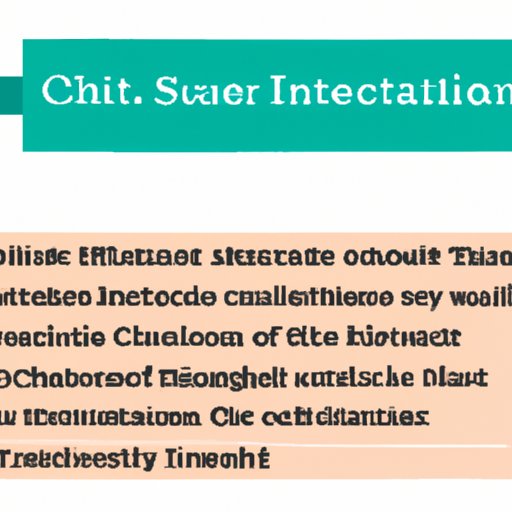
I. Introduction
As writers, we all know the importance of citing our sources properly. It not only avoids plagiarism but also enhances the credibility of our research. However, while citing books and journals is quite straightforward, citing website sources can be challenging. In this article, we will provide a comprehensive guide to in-text citations for website sources.
II. Understanding In-Text Citations
Before we delve into citing website sources, let’s first understand what in-text citations are. In-text citations are brief references within the body of your writing that show where you found the information you are using. They provide your reader with enough information to locate the full citation in your reference list. In-text citations are essential for any academic writing or research as they show the reader which sources support your claims.
The information provided in an in-text citation differs based on the citation style and the type of source you are citing.
III. Why Citing Websites is Important
In today’s digital age, websites are common resources for research. They can provide critical insights, data, and information. However, websites also present unique challenges to citing sources. Unlike traditional publications, websites can be modified or deleted without notice. Therefore, it becomes essential to credit website sources.
Proper citation of website sources enhances the credibility of your research, helps to avoid plagiarism, and allows the reader to identify and assess the sources you used. Given the crucial role of websites as research sources, it is vital to understand how to create proper in-text citations.
IV. The Basics of In-Text Citations for Websites
Now, let’s explore the basics of citing a website in-text. When citing a website in-text, you have to include certain elements such as the author name, date of publication, and the title of the article or webpage. The information provided depends on the citation style you are using.
The three most commonly used citation styles for in-text citations are APA, MLA, and Chicago. Let’s briefly explore them.
APA style: Typically used in the social sciences, the APA style requires the author’s last name and the year of publication.
MLA style: Often used in the humanities, the MLA style requires the author’s last name and the page number. If the author’s name is not available, you can use the title of the article or webpage.
Chicago style: Used in social sciences and the humanities, the Chicago style requires the author’s last name, publication date, and the title of the source.
V. How to Properly Cite Web Sources
Now that we have a basic understanding of the different citation styles for in-text citations, let’s dive into how to properly cite a web source.
Step One: Identify the Elements to Include
The elements to include in an in-text citation depend on the citation style. As mentioned earlier, the most important elements include the author, title, and date.
Step Two: Determine the Citation Style
The next step is to determine the citation style to use. APA, MLA, and Chicago are the most commonly used citation styles.
Step Three: Format the In-Text Citation
The formatting of the in-text citation depends on the citation style. Let’s explore each of the styles in greater detail:
APA style: The in-text citation for a web source in APA format is (last name, year). For example: (Miller, 2018).
MLA style: In MLA documentation style, the author’s name can be mentioned in the text or in parentheses before the relevant information, e.g. (Miller). If the author’s name is not provided, you can use a few words of the title in parentheses.
Chicago Style: In Chicago style, you can choose to mention the author’s name and date in the sentence or in parentheses. For example: Miller (2018) argues that…
Step Four: Include the In-Text Citation in Your Writing
The final step is to include the formatted in-text citation in your writing. Be sure to place it at the appropriate point within the sentence or paragraph, usually at the end of the sentence or clause.
VI. Tips for Navigating In-Text Citations
While understanding the basics of in-text citations for websites is essential, there are also a few tips that can help you navigate citations more smoothly.
Tip One: Keep Track of All Your Website Sources
Ensure you keep track of all your website sources, including relevant information such as author, publication date, and URL. This saves you time and hassle later on when creating in-text citations.
Tip Two: Use Online Citation Generators
If you are still struggling with in-text citations, there are many online citation generators that can do the work for you. All you need to do is input the information, and the generator will create the citation for you, making the whole process much easier and error-free.
Tip Three: Double Check Your Work
Even if you are using citation generators, remember to double-check everything. Citation generators can make mistakes, which can impact the credibility of your research. Before submitting your work, proofread your citations to ensure they are accurate and formatted correctly.
VII. Conclusion
In conclusion, proper citation of website sources is a critical aspect of any academic research or writing. It adds credibility to your work and helps to avoid plagiarism. In this article, we have provided a comprehensive guide to in-text citations for web sources, including a discussion of citation styles, step-by-step guides, and tips for navigating citations smoothly. We hope this guide helps you in your research and writing endeavors.




